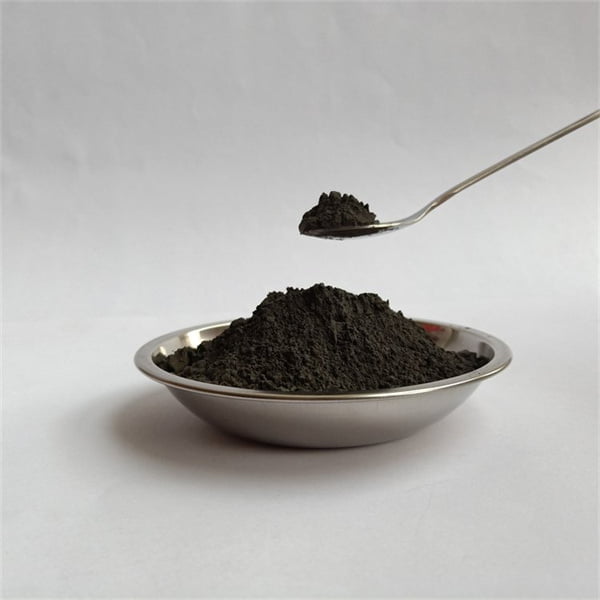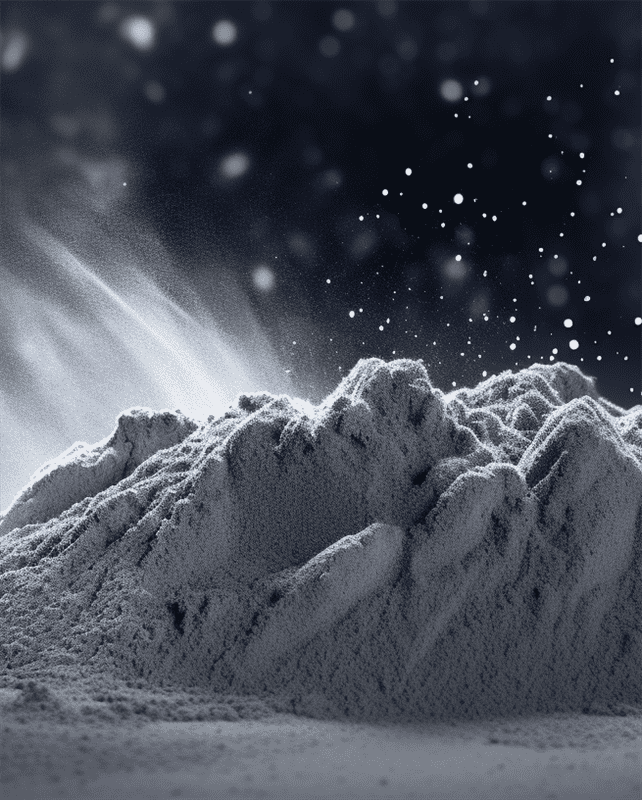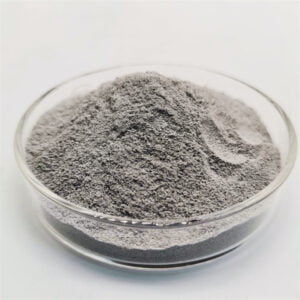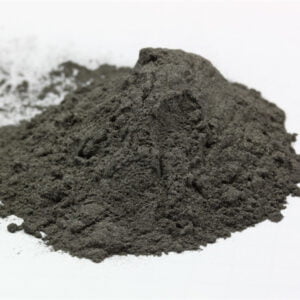IN738LC 超合金
目次
IN738LCは、ガスタービンエンジンの高温部部品に広く使用されている重要なNi基超合金です。優れた高温機械特性と良好な加工性を兼ね備えています。
このガイドでは、IN738LCの組成、特性、加工、用途、利点、制限、供給業者、代替超合金との比較など、IN738LCの詳細な概要を説明しています。
入門 IN738LC 超合金
IN738LCは、析出硬化型のニッケル基超合金で、次のような主な特徴があります:
- 優れた高温強度と耐クリープ性
- 優れた耐熱疲労性と耐酸化性
- 1100℃まで特性を保持
- 加工性に最適化された組成
- ガスタービンの多様な用途
- シート、プレート、バー、鍛造部品として入手可能
- 適切な技術で溶接可能
IN738LCは、そのバランスのとれた特性により、厳しい条件下で作動する幅広いガスタービン部品に適しています。

IN738LCの化学成分
IN738LCの公称化学組成は以下の通り:
IN738LC 化学成分
| エレメント | 重量 % |
|---|---|
| ニッケル | バル |
| クロム | 16.0 |
| コバルト | 8.5 |
| アルミニウム | 3.4 |
| チタン | 3.4 |
| タンタル | 1.7 |
| カーボン | 0.11 |
| ボロン | 0.001 |
- ニッケルはマトリックスとなり、延性を向上させる。
- 耐高温腐食性と耐酸化性のためのクロム
- 強化のためのTa、Ti、Wのような耐火性元素
- 粒界強化用カーボン/ボロン
- 溶接性のために最適化された組成
バランスの取れた合金設計により、高温強度、延性、加工性を兼ね備えている。
IN738LCの物理的および機械的特性
物理的性質
- 密度:8.19 g/cm3
- 溶融範囲1315-1370°C
- 熱伝導率:11 W/m-K
- 弾性係数:205 GPa
- 電気抵抗率:125μΩ・cm
室温での機械的特性
- 引張強度:1035 MPa
- 0.2% 降伏強さ:965 MPa
- エロンゲーション:22%
- 疲労強度:590 MPa
高温機械特性
- 引張強さ:
- 750 MPa at 704°C
- 255 MPa at 982°C
- 破断強度:
- 240 MPa at 760°C (100 時間)
- 170 MPa at 982°C (100 時間)
この特性により、適切な設計マージンをもって、〜9500℃までの長期使用に適している。
IN738LC超合金の主な用途
IN738LCは次のような用途に使用されています:
- ガスタービン高温部部品:
- 燃焼器ライナー
- トランジションダクト
- タービンノズル
- ステージ1と2のタービンブレードとベーン
- ロケットエンジン燃焼室
- 熱処理治具
- 核燃料棒
- 化学プロセス産業部品
その多用途性により、要求の厳しい環境におけるいくつかの重要な高温用途に有用である。
製造と加工 IN738LC
IN738LCの製造上の重要な点は以下の通り:
溶解
- 真空誘導溶解と真空アーク再溶解
- 化学的均質性の確保
形にする
- 1150°C以上の熱間加工
- シートおよび箔の冷間加工
熱処理
- 溶体化処理 – 1120°C、急速冷却
- 析出硬化 – 845°C、24時間、空冷
接合
- 電子ビームと真空ろう付け
- 適合するフィラー合金を使用した融合溶接
コーティング
- 拡散アルミナイドおよびオーバーレイコーティング
- 遮熱コーティング
最適な特性を実現するには、溶融、熱間加工、熱処理、接合、コーティングの制御が重要です。
IN738LC 超合金を選ぶ理由
IN738LC の主な利点:
- 優れた高温機械特性
- 約1100°Cまで強度と耐クリープ性を維持
- 優れた耐熱疲労性と耐酸化性
- 他のNi超合金に比べて加工柔軟性が優れている
- 複雑な部品を製造するために溶融溶接が可能
- シート、プレート、バー、鍛造品として入手可能
- 現代の合金に比べてコスト効率が良い
- 確立された処理方法と利用可能なデータ
- 重要なエンジン部品として承認
IN738LC はバランスのとれた特性と加工性を備えているため、多くのガスタービンの高温セクション部品に最適です。
IN738LC超合金の使用上の制限
IN738LC を使用する際に考慮すべき制限事項は次のとおりです。
- 最新の単結晶合金よりも高温強度が低い
- 非常に高温のタービン部品には適していません
- 成形中にひずみ時効割れが発生しやすい
- 慎重に管理された熱処理が必要
- Nb含有合金よりも耐酸化性が低い
- 溶接性はIN718ほど良くない
- 成形により残留応力が生じる可能性がある
IN738LC は、非常に要求の厳しい環境には適さない可能性があります。制限を緩和するには、適切な設計と処理が重要です。
IN738LC 超合金サプライヤー
IN738LC 合金の主要サプライヤーには以下のものがあります。
- 特殊金属株式会社
- アレゲニー・テクノロジーズ
- ヘインズ・インターナショナル
- カーペンター・テクノロジー
- サンドビック・マテリアル・テクノロジー
- プレシジョンキャストパーツ株式会社
IN738LC は次の形式で提供されます:
- シート/プレート
- バー
- 鍛造ストック
- ワイヤー
- 溶接消耗品
さまざまな製造要件に合わせて、さまざまな製品形態が提供されています。
IN738LC 超合金のコスト
IN738LC コスト指標
- シート: $90-110/kg
- バー: $100-120/kg
- 鍛造材: $110-130/kg
- コストはサイズ、数量、サプライヤー、原材料費によって異なります
- 一般的に10-15%は現代のNi合金よりも経済的です
- 高純度の原材料が必要となりコストが上昇する
IN738LC は、多くのガスタービン アプリケーションにコスト効率の高いパフォーマンスを提供します。長期契約により、安定した価格を確保できます。
比較 IN738LC 代替超合金
IN718との比較
- IN738LCはより高い温度性能を備えています
- より優れたクリープ特性と熱疲労特性
- IN718との比較で成形上の問題を低減
- IN718は溶接性が良い
IN713Cとの比較
- IN738LCは、より高い引張強度とクリープ強度を有する。
- 位相安定性の向上
- IN713Cより低い膨張係数
- IN713Cは加工性が良い
現代のニッケル合金との比較
- ルネスN5やCMSX-4のような先進合金は、より高い温度強度を提供する
- しかし、加工性が悪く、コストも高い。
- IN738LCは、以下の特性を組み合わせたコストパフォーマンスの高い製品です。

よくあるご質問
Q: IN738LC合金の主な用途は何ですか?
A: 主な用途は、燃焼器、トランジションダクト、ノズル、タービンベーン、ブレードなどのガスタービン高温部部品です。また、ロケットエンジンや核燃料棒にも使用されています。
Q: IN738LCの主な特性は何ですか?
A: 1100℃までの優れた高温機械的特性、優れた耐疲労性と耐酸化性、高強度、他のNi超合金よりも優れた加工性を持っています。
Q: IN738LCにはどのような熱処理が施されていますか?
A: 1120℃の溶体化処理後、845℃/24時間の析出硬化。要求される特性を得るためには、制御された熱処理が重要である。
Q: IN738LCの溶接方法は?
A: 電子ビームと真空ろう付けが一般的です。また、適合するフィラー合金と注意深く管理された工程を使用すれば、融接も可能です。
Q: IN738LCの代替品には何がありますか?
A: 代替品としては、IN718、IN713C、そしてRenes N5やCMSXのような先進的なニッケル合金があります。それぞれIN738LCに対して相対的な長所と短所があります。
Q: IN738LCはコーティングが必要ですか?
A: 拡散アルミナイドコーティングやオーバーレイコーティングが使用できます。遮熱コーティングはタービン部品に有効です。コーティングは耐酸化性と耐食性を向上させます。
Q: IN738LCを加工する際の注意点は?
A:加工硬化の影響を避けるため、鋭い工具で高い切削速度が必要です。大量のクーラントが不可欠です。機械加工は、リリーフ熱処理が必要な残留応力を引き起こす可能性があります。
Q: IN738LCはガスタービンエンジンのどこで使用されていますか?
A:燃焼ライナー、トランジションダクト、ノズル、第1・2段タービンベーン、高温部のブレードなどに広く使用されています。
Q: IN738LCにはどのような形状がありますか?
A: 一般的な製品形状には、薄板、厚板、棒材、鍛造品、線材がある。熱間断面部品の製造には、要求に応じて様々な形状が使用される。
シェアする
MET3DP Technology Co., LTDは、中国青島に本社を置く積層造形ソリューションのリーディングプロバイダーです。弊社は3Dプリンティング装置と工業用途の高性能金属粉末を専門としています。
関連記事
Met3DPについて
最新情報
製品

3Dプリンティングと積層造形用金属粉末












